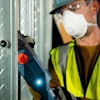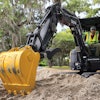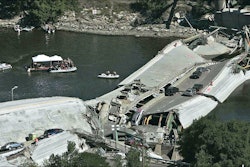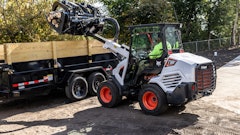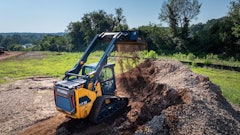On August 1, 2007, the I-35W Bridge collapsed during rush hour, killing 13 people, injuring 145, and bringing massive economic disruption to the Twin Cities metropolitan area. The November 2008 National Transportation Safety Board (NTSB) report, which followed fifteen months of investigation, advised the public and transportation officials around the country that the bridge collapse was a one-time occurrence, caused by a simple design error that had gone undetected at the time of construction.
In short, the collapse was a one-off from which no lessons could be learned to avoid future failures. Barry LePatner says that just isn't true. He suggests the NTSB report whitewashed the true causes of the bridge collapse, and he stresses the need for reform in the way we fund and maintain the nation's infrastructure.
"NTSB's final report tellingly ignored a host of critical factors that were not disclosed to the public or other state bridge operators, which sadly delegitimized the efficacy of the report," says LePatner, author of the new book Too Big to Fall: America's Failing Infrastructure and the Way Forward (www.TooBigToFall.com). "A careful analysis of the NTSB report shows that it masked far more than it revealed about how the bridge was maintained, funded, and operated."
Design error or lack of action?
NTSB's final report said that the bridge's collapse was the result of a design error -- specifically, the under-design of certain gusset plates (metal plates used to connect structural members of a truss and hold them in position at a joint) at six nodes of the deck truss. The report revealed that these gusset plates should have been an inch thick, but instead were only half that thickness, contrary to the original design specification.
Adding to the stresses on the too-thin gusset plates, the report stated, were increases to the bridge's load. According to the NTSB report, had all the gusset plates met design standards at the time of construction, then -- even with the increased weight from the bridge's additions, the increase in traffic, and the weight of the construction materials and machinery -- the collapse would not have occurred.
"The reality is that the NTSB's findings virtually ignored sixteen years of inspections by the Minnesota Department of Transportation (MN/DOT) that reflected the steady decline of the bridge over a sixteen-year period," says LePatner, who coauthored Structural and Foundation Failures (McGraw-Hill, 1982) with engineer Sidney M. Johnson. "Widespread evidence of corrosion for critical steel members, frozen bearings that locked the bridge in place, and cracks throughout the bridge and approach spans rendered the condition of the bridge as 'poor,' which required some of the bridge's traffic lanes to be closed.
"All of these critical factors were highlighted in several outside engineering reports commissioned by MN/DOT," he adds. "These reports, which detailed the frailties of this fracture-critical bridge (meaning the failure of one structural member would trigger the collapse of the bridge), made a series of recommendations -- which went completely unheeded -- for addressing the problems resulting from neglected maintenance."
How did the NTSB fall short of really serving the people of Minnesota and the national public as a whole? LePatner explains:
The NTSB report wrongly exonerates MN/DOT. Based on the maintenance history of the I-35W Bridge's extensive wear and tear, corrosion, and signs of incipient failure for many years prior to its collapse, dismissing MN/DOT of any responsibility for its collapse is inexcusable. Inspections dating back to 2001 identified widespread corrosion and fatigue caused by weather and traffic volume.
Recognizing the fragility of the bridge's original fracture-critical design, engineering firm consultants stressed the need for added redundancy to strengthen the bridge. A June 2006 inspection -- the last one before the bridge's collapse -- found cracking and fatigue problems and gave the bridge a sufficiency rating of 50 percent. A rating of 50 percent or lower pursuant to federal standards is interpreted to mean that the bridge should be considered for replacement.
"The NTSB reported none of these facts," says LePatner. "It dismissed any connection between the bridge's collapse and MN/DOT's maintenance of the bridge, or its poor condition for sixteen years prior to its failure. The report said nothing about MN/DOT's decision-making process or whether MN/DOT had acted prudently in light of the engineering consultants' recommendations to protect the well-documented fragility of the bridge."
The NTSB report ignored the bridge's inspection reports. The NTSB's findings were subjected to criticism even before they were published in November 2008.
In January of that year, after NTSB Chairman Mark Rosenker made a preliminary announcement that an error in the design of the gusset plates was the critical factor in the collapse of the bridge, James Oberstar of Minnesota -- chairman of the House Committee on Transportation and Infrastructure, who had promptly introduced a bill to overhaul national bridge inspection procedures following the I-35W disaster -- angrily accused the NTSB of rushing to judgment. That same month, in the Minneapolis-St. Paul Star Tribune, Jim Carlson, a member of the Minnesota legislature's joint committee on the I-35W Bridge collapse wrote, "The collapse was not an act of God; it was an error of oversight. Something was missed."
The NTSB report was negatively influenced by politics. On August 14, 2007, the Minnesota legislature appointed a joint committee to investigate the bridge collapse, which hired the law firm Gray Plant Mooty to produce its own report. One possible factor in the Minnesota legislature's decision to launch its own investigation was the suspicion aroused by NTSB's announcement, only a week after the I-35W Bridge fell, that a possible design flaw in the bridge's gusset plates caused the collapse.
Months later, NTSB Chairman Rosenker appeared at a press conference. Although in his opening statement he was careful to state that, "We have not yet determined the probable cause of the accident," he went on to call sixteen under-designed gusset plates the "critical factor that began the process of this collapse." This statement earned him a sharp rebuke from Rep. Oberstar, who wrote in a letter to Rosenker that, "Such announcements undermine the process and create the potential for committing the Board to conclusions which will be difficult to change if subsequent investigation suggests other possible conclusions."
Rosenker retracted his statements, but found himself at loggerheads with Oberstar again after the NTSB announced, in late March, that it would not hold an interim public hearing on the I-35W Bridge collapse. The three NTSB members -- all Republicans -- who voted against holding an interim public hearing explained their decision by stating that NTSB staff feared that holding such a hearing would take time and resources away from their investigation.
Oberstar and the two Democratic members of the NTSB (who issued a dissent from the majority's decision) replied by arguing that performing a thorough and trustworthy investigation was more important than speed. It was no small matter that the head of MN/DOT was Governor Tim Pawlenty's lieutenant governor, Carol Molnau, who herself was not an engineer experienced in infrastructure management.
"The politics surrounding the NTSB investigation certainly provide much fodder for speculation as to the possible political motivation of the board's leadership and findings," says LePatner. "But it does not require a political orientation to observe that the NTSB report has significant flaws, including errors of apparent neglect or omission as well as of technical understanding."
The NTSB report wrongly placed blame on the engineers. According to the NTSB report, a forty-year-old engineering error was the main cause of the bridge's failure. "The reality is that there has been a mass exodus of engineers out of the public sector," says LePatner. "It is likely the lack of engineers, not the decades-old design of the bridge, that contributed to its collapse. The Gray Plant Mooty report, which was commissioned by the Minnesota legislature following the collapse, pointed to various organizational weaknesses within MN/DOT that compromised the safety of the bridge: a poor flow of information; bad use of expert advice; and an organizational structure that impeded the maintenance process.
"The inadequate flow of information within MN/DOT was related to the loss of engineering personnel," LePatner explains. "Placing the primary blame for a failure of this magnitude on engineers was an attack on the profession as a whole. Yet the silence of the profession has been deafening. The American Society of Civil Engineers, the largest professional engineering association in the country, has marshaled no protests and has conducted no investigations of its own to challenge this indictment of individual engineers who are no longer around to defend themselves."
The NTSB report does not mention the bridge's rusted bearings. The June 2006 MN/DOT inspection noted surface rust corrosion and pack rust connected with the unsound condition of 15 percent of the paint; numerous problems with the main truss members, including poor weld details, section loss, and flaking rust; and a variety of problems with the floor beam trusses, stringers, truss bearing assemblies, and other components.
"While the NTSB findings on the cause of the collapse made no reference to the condition of the bridge bearings, frozen by years of rust, they may have played a contributory role in the collapse," notes LePatner. "MN/DOT's inspection reports acknowledged that the I-35W Bridge's members were bent or misaligned, and that critical bearings had been rusted and frozen in place, preventing movement. All of these signs of deterioration should have required close scrutiny, but that never happened. The NTSB ignored the significance of these reports."
As part of his investigation, conducted with interviews of bridge engineering experts across the country, LePatner was able to identify the likely cause of the I-35W Bridge collapse as being triggered by a weakness in one of the bottom chords of the design trusses, a finding that appears to have separately been identified by the structural engineering experts retained by the attorneys for many of the plaintiffs in the civil action against the bridge's contractors and engineers.
"What is most important to note about the role of the NTSB is that it failed to serve as a clearinghouse to alert all other state bridge operators about the lessons that should have been learned from the collapse of the I-35W Bridge," notes LePatner. "As I present in Too Big to Fall, there are still 7,980 bridges in the nation that are both structurally deficient and fracture-critical, each of which is in danger of suffering the same fate as the I-35W Bridge.
"To have failed to identify the true causes of the collapse of the I-35W Bridge is one notable failure of this governmental agency. But to have ignored the lessons that should be alerting the other forty-nine states that their citizens, too, are in jeopardy of suffering the same tragic fate is inexcusable.
"The NTSB missed a critical opportunity to use the lessons that should have been learned from Minneapolis's tragedy to ensure that similar conditions at bridges all across the nation do not lead to more disasters," he concludes. "The risks of continuing to ignore our ill-maintained national in¬frastructure are almost unimaginable. This discussion must turn into a dialogue at every level of government and policymaking. Our future national security and our ability to retain our global leadership status are at stake."
About the Author:
Barry B. LePatner is the author of Too Big to Fall: America's Failing Infrastructure and the Way Forward and Broken Buildings, Busted Budgets: How to Fix America's Trillion-Dollar Construction Industry (University of Chicago Press, 2007), and the coauthor of Structural and Foundation Failures. He is founder of the New York City-based law firm LePatner & Associates LLP. For three decades, he has been prominent as an advisor on business and legal issues affecting the real estate, design, and construction industries. He is recognized as one of the nation's leading advisors to corporate and institutional clients, real estate owners, and design professionals.

